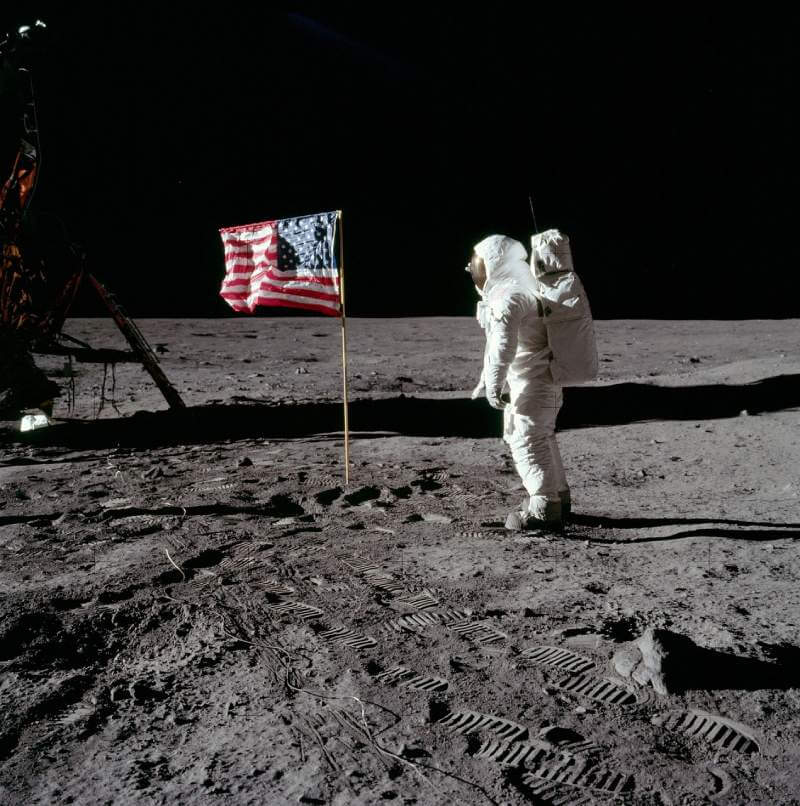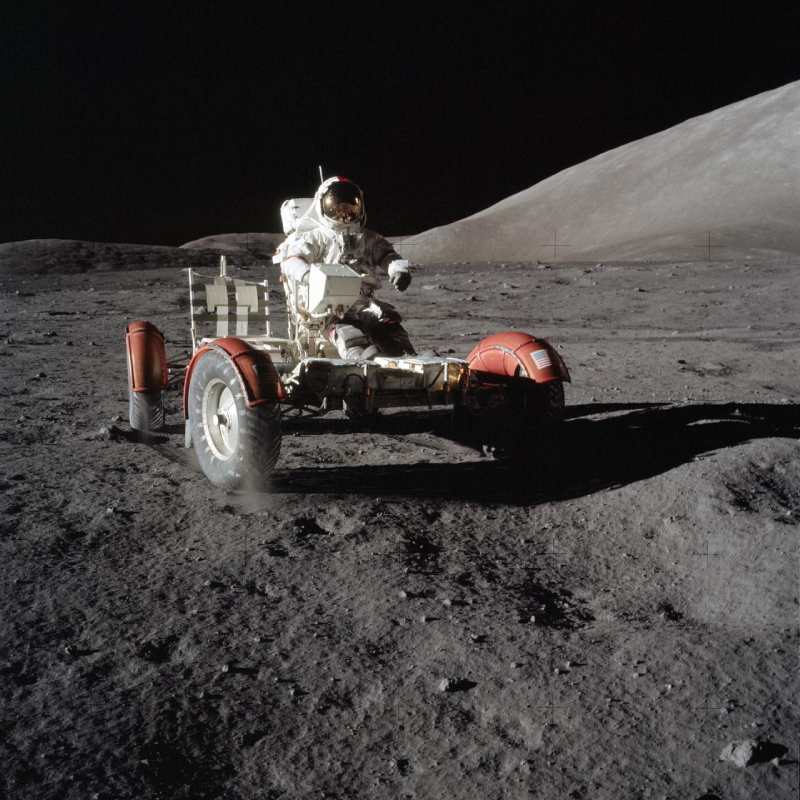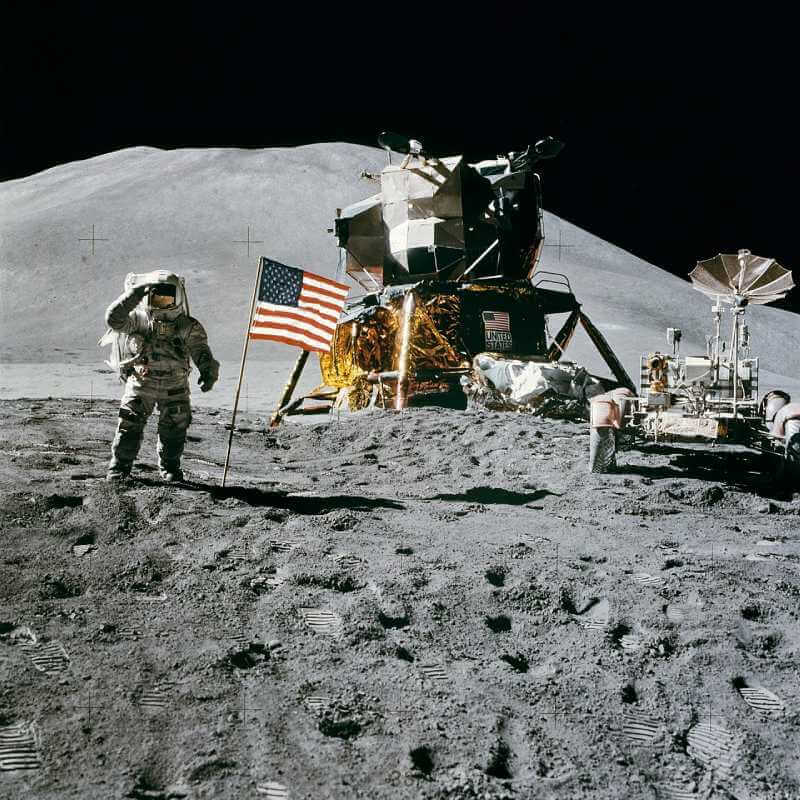For centuries, the idea of setting foot on the Moon’s silvery surface remained a dream – until the Apollo program appeared. Among exclusive groups, walking on anything aside from Earth is incredibly impressive!
Up until now, only 12 people have walked on the Moon. People have been to space before and after, but we’re talking about a seriously handpicked and tiny crew who’ve touched down on what’s an alien world – even if it’s a bit of a small-scale one!
The Apollo Missions Launch
However, did you know that the initial goal of this mission wasn’t to land on the Moon? In the 1960s, when the Apollo program was first announced, the aim was to send a group of three on just an orbit around the Moon.
Landing was off the original agenda. It was in May 1961 when John F. Kennedy declared before the nation that a return from the Moon’s surface would become the last goal. In his speech, he mentioned, “We choose to go to the moon in this decade and do other things, not because they are easy, but because they are hard”.
The First Steps to The Moon
On July 20, 1969, Apollo 11 astronauts Neil Armstrong and Edwin “Buzz” Aldrin officially became the first humans to set foot on the Moon. The first man to set foot on the Moon, Neil Armstrong, uttered, “One small step for man, one giant leap for mankind”. But listen, that first step wasn’t small at all! This is because when Armstrong was landing the Lunar module onto the surface of the Moon, the shock absorbers failed to compress – meaning that the first step was over a meter jump!

After the first steps to the Moon, more astronauts – Pete Conrad and Alan Bean – were sent in 1969 for Apollo 12, who were on the Moon for two days. You may have questions on why Apollo 13 is not next in sequence. An accident occurred during the launch; the astronauts did not reach the Moon. They escaped death by ejecting themselves from the spacecraft after the tank on the rocket exploded.
NASA sent more astronauts in 1971 to Apollo 14. Alan Shepard and Edgar Mitchell were the two men who purposely visited the Moon to help study moonquakes. Apollo 15 carried David Scott and James Irwin, who walked and stayed on the Moon’s surface for three days. Not outside the Moon – but spent about 19 hours riding and walking, in total, on the surface of the Moon.
Apollo 16 was sent to space in April 1972 – John Young and Charles Duke were able to walk on the surface of the Moon – During their stay, they went on three moonwalks. The Apollo 17 happened in 1972. For three days, Eugene Cernan and Harrison Schmitt thrice walked on the Moon’s surface.
That was the last step to the Moon. There have not been any astronauts on the Moon since 1972. Interestingly, you may assume that since each mission had two astronauts walking on the Moon, that was the only one on board. However, each mission carried three astronauts.
In a nutshell, here’s the list of those who made it to the Moon’s surface in the Apollo Era:
- Neil Armstrong (Apollo 11)
- Edwin Buzz Aldrin (Apollo 11)
- Charles “Pete” Conrad (Apollo 12)
- Alan Bean (Apollo 12)
- Alan B. Shepard (Apollo 14)
- Edgar D. Mitchell (Apollo 14)
- David R. Scott (Apollo 15)
- James B. Irwin (Apollo 15)
- John W.Young (Apollo 16)
- Charles M. Duke (Apollo 16)
- Eugene Cernan (Apollo 17)
- Harrison H. Schmitt (Apollo 17)
What Does Walking on The Moon Look Like?
Ever wondered what it’s like strolling on the Moon? Well, the Moon’s gravity is just a fraction of what we’re normally used to on Earth – only about 1/6th. What does this mean? You’d weigh 16% of your Earth weight and can leap around six times higher than technically – your best Earth jump.
Another thing is that the Moon’s atmosphere is so thin that the hues appear more vivid and sharper. Meaning you’ll notice something different: the vibrant colors surrounding you. The view from the Moon is different, too, with a brilliant gray landscape meeting the black void of space. Charlie Duke, an astronaut from Apollo 16, described the Moon’s sharp contrast between the Moon’s black and brilliant gray, telling Forbes that his dearest memory of the Moon is its beauty.
But honestly, as dreamy as it may sound, walking on the Moon has its cons. Imagine having a lot of moon terrain to cover with little time on your hands. The Lunar Roving Vehicle (LRV), which debuted in 1971 with Apollo 15, came into play and changed the entire lunar commute game. The LRV was created to tackle the unique challenges of the environment around the Moon – low gravity and vacuum-like atmosphere.

The LRV was compact enough for space travel and could unfold like a futuristic origami creation immediately after the astronauts arrived on the Moon. With a top speed of up to 10 miles per hour (16 kilometers for my metric friends), it could let astronauts cruise around like lunar explorers on a space road trip! Covering over 55 miles (89km), the LRV was more than just a mode of transportation.
Only 12 astronauts have walked on the Moon. This does not mean only those who have been to the Moon. Many have been to the Moon but did not get a chance to walk on the surface of the Moon.

